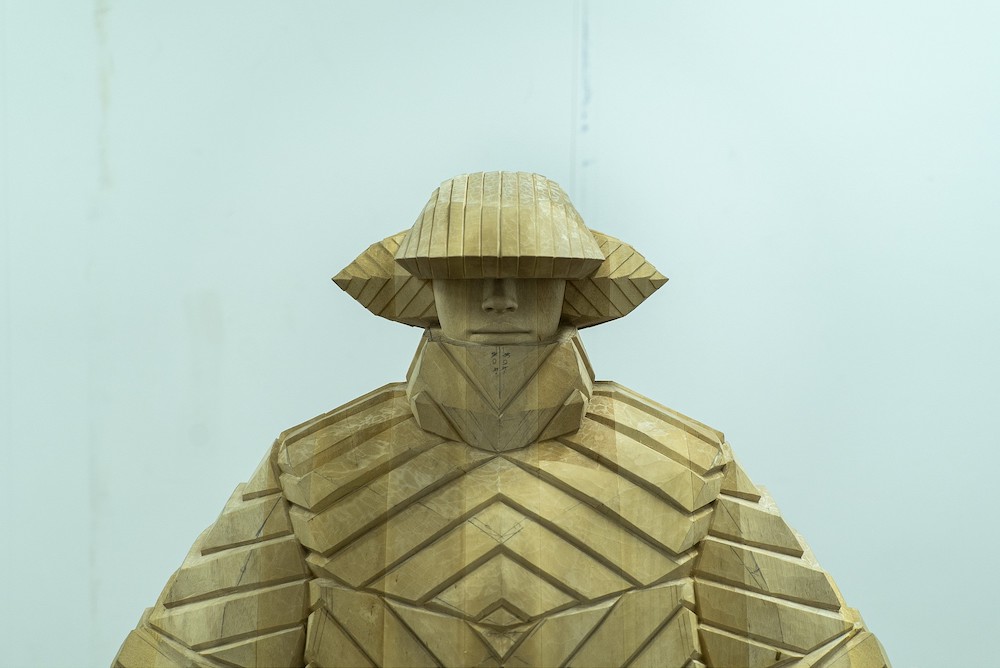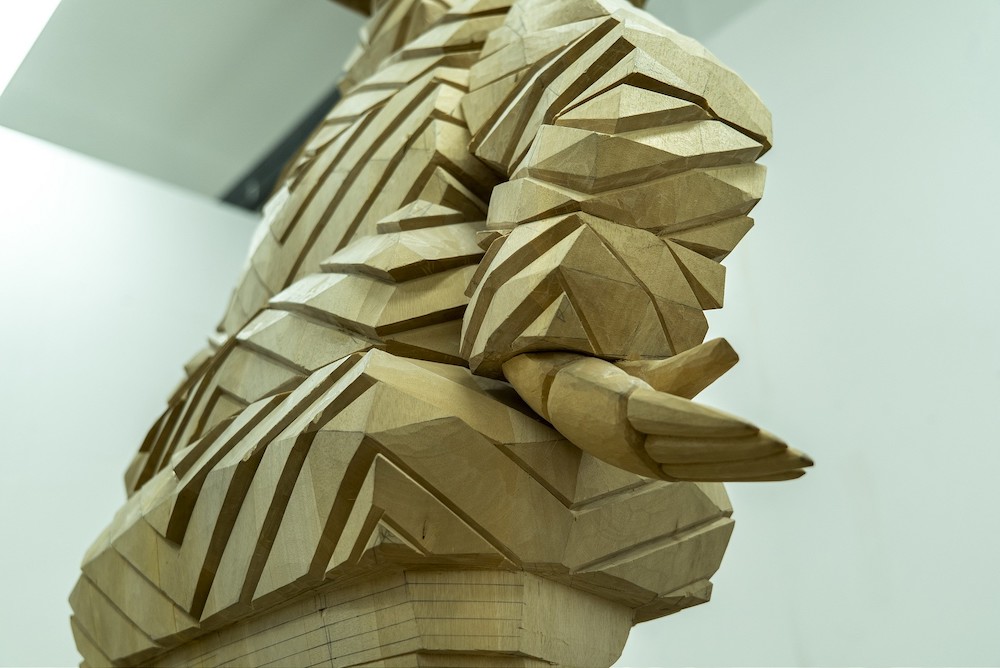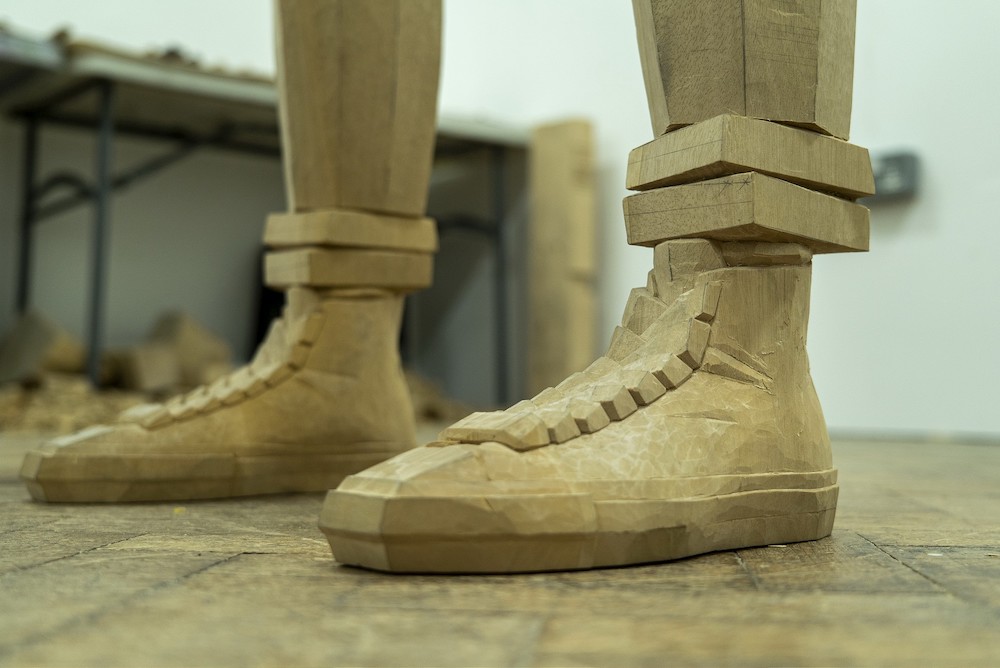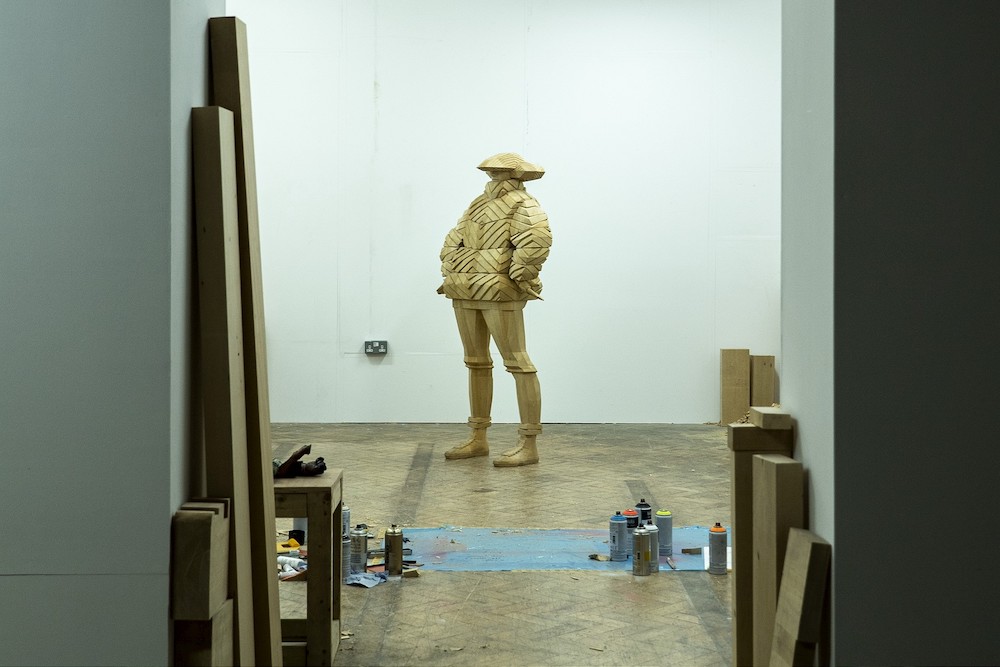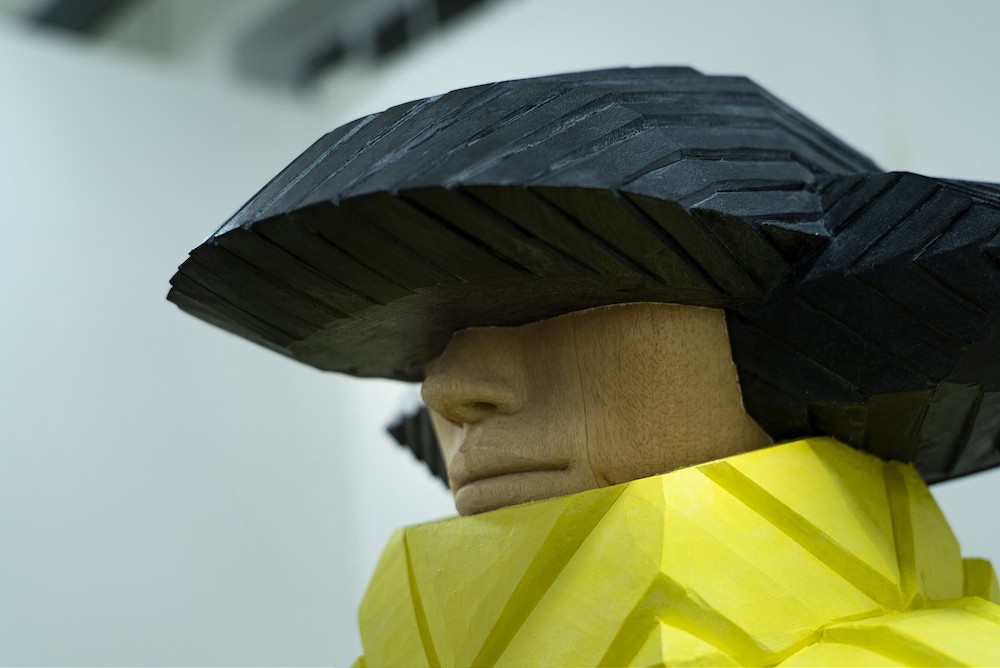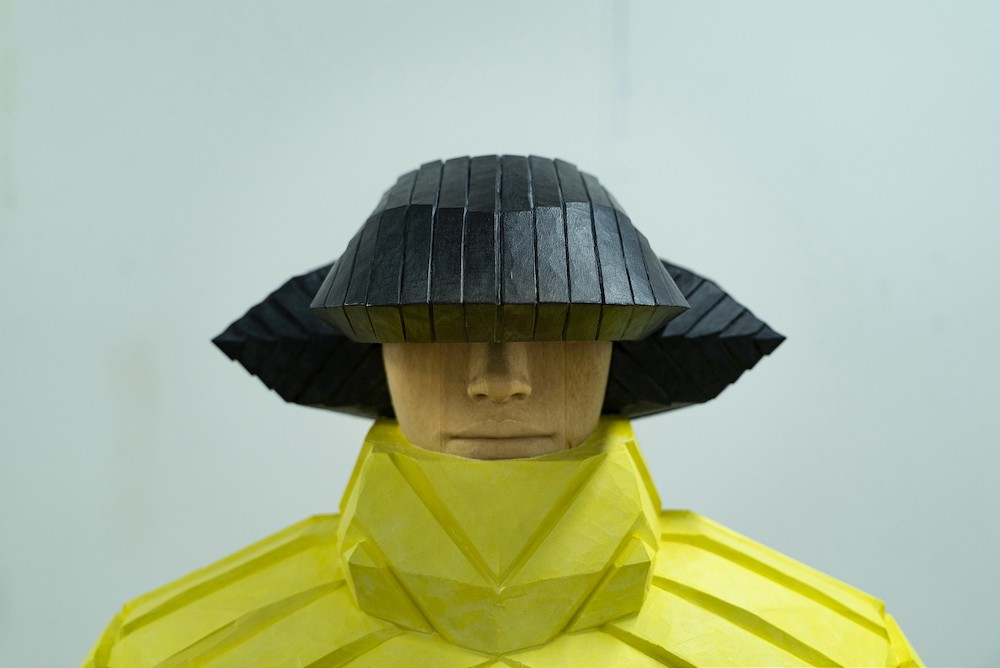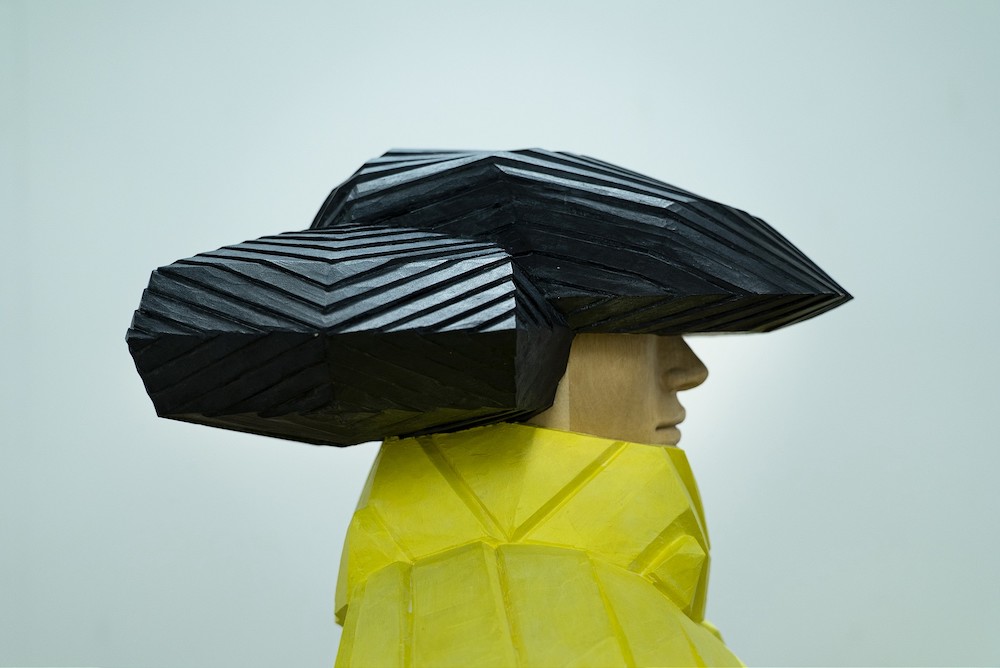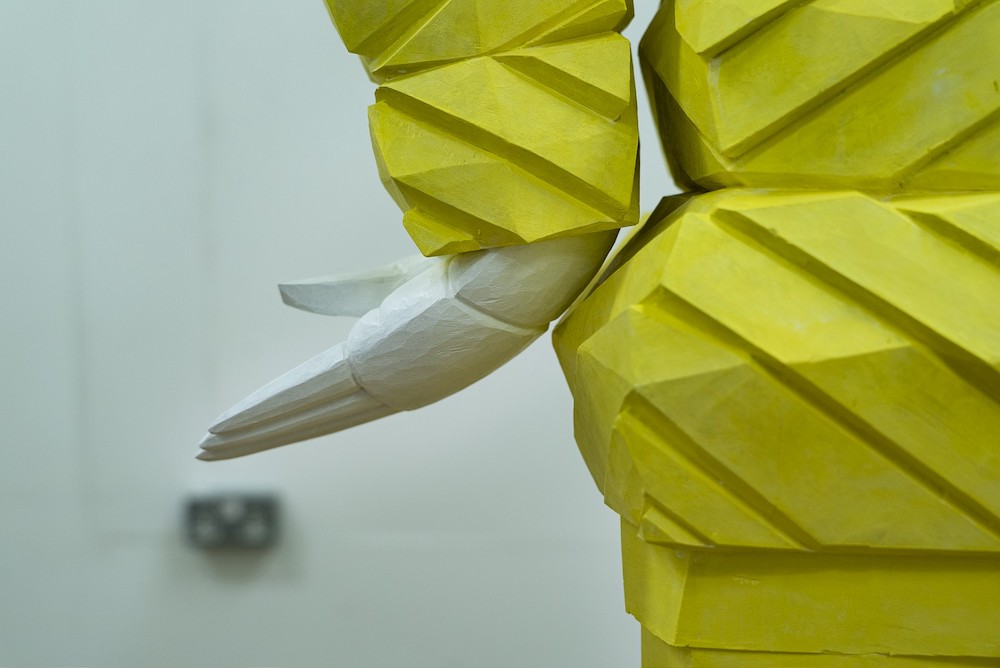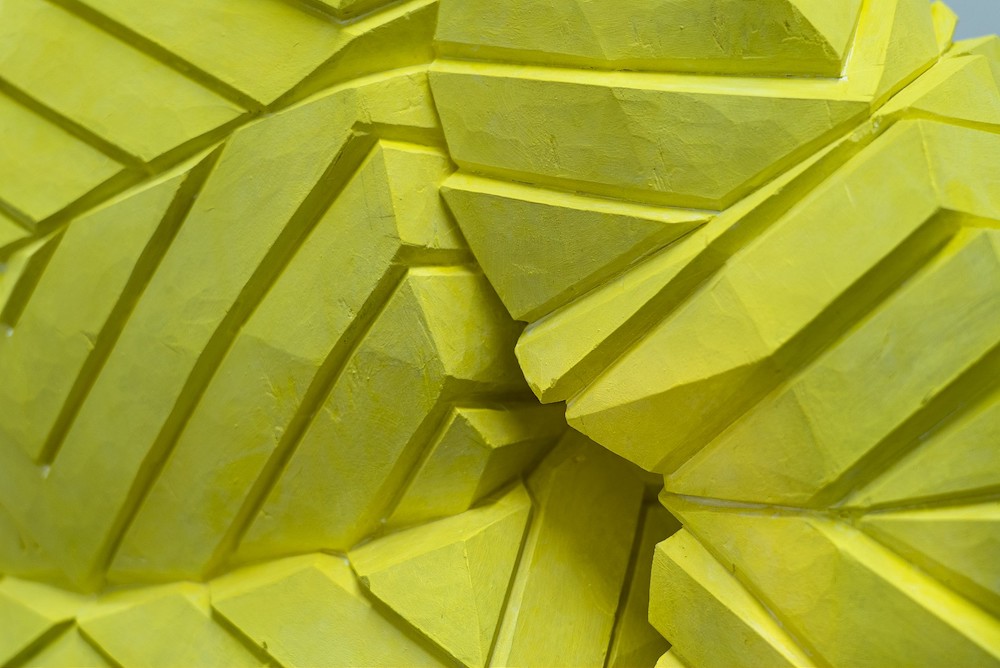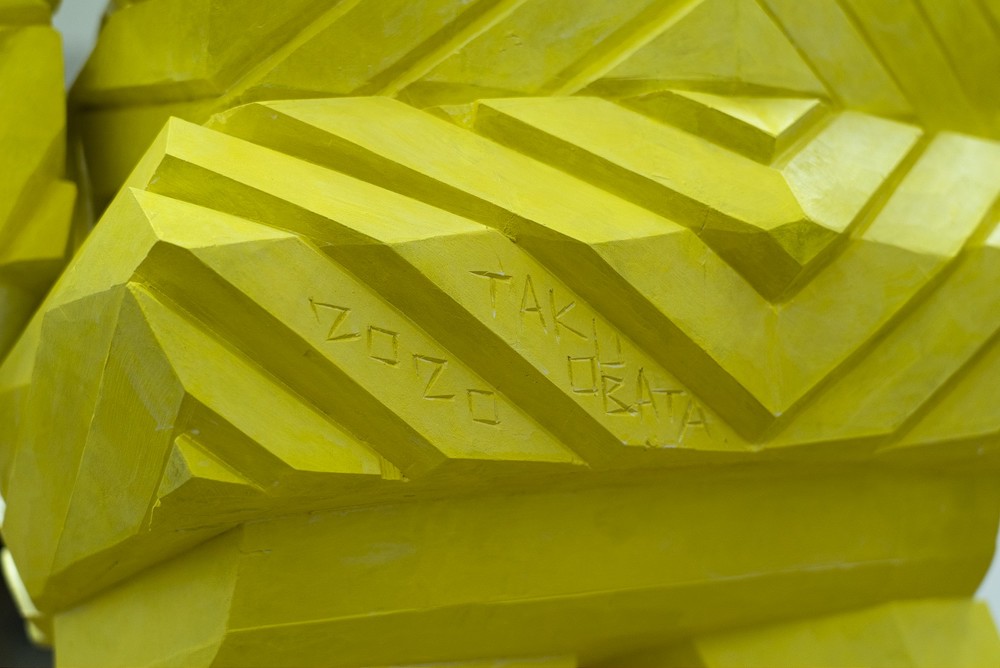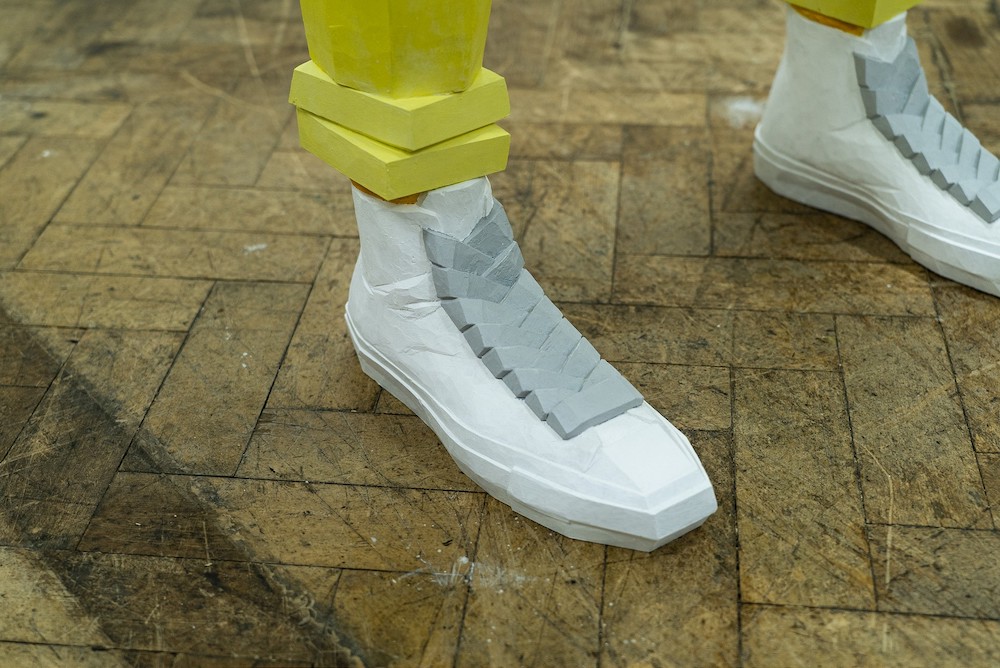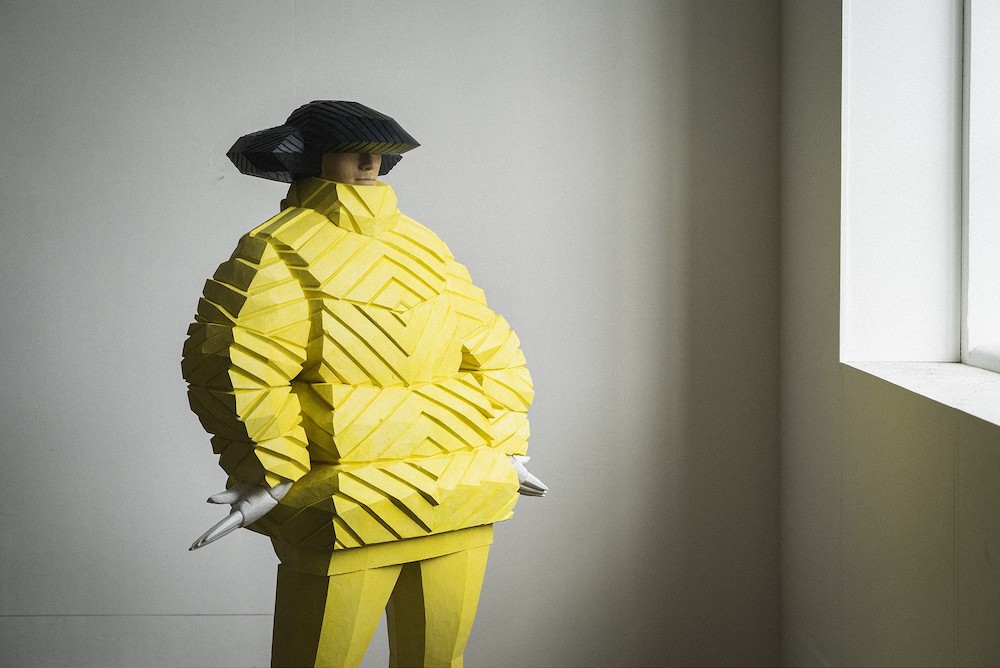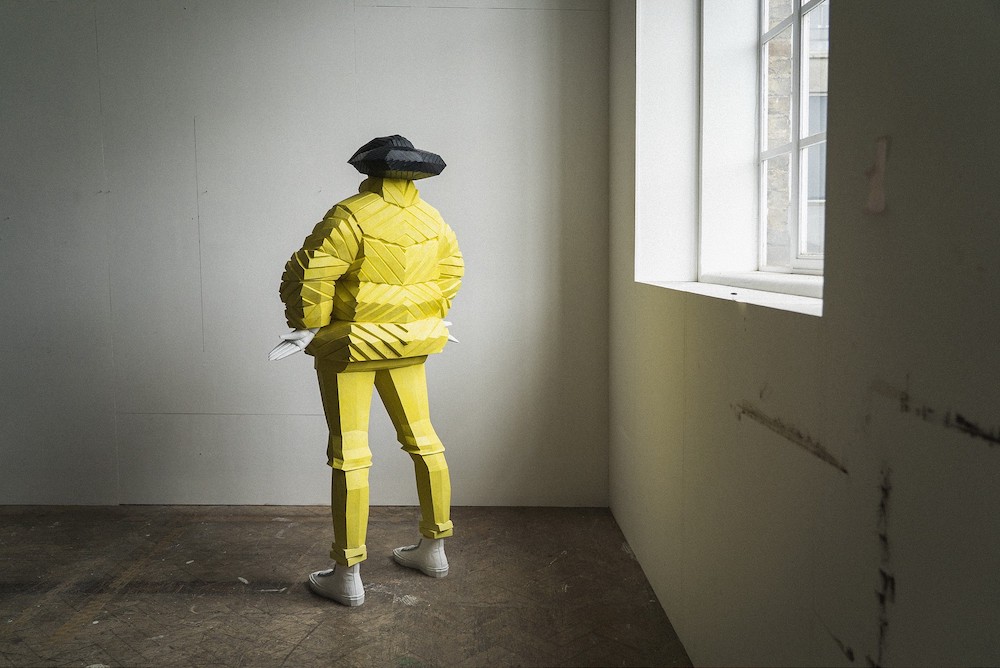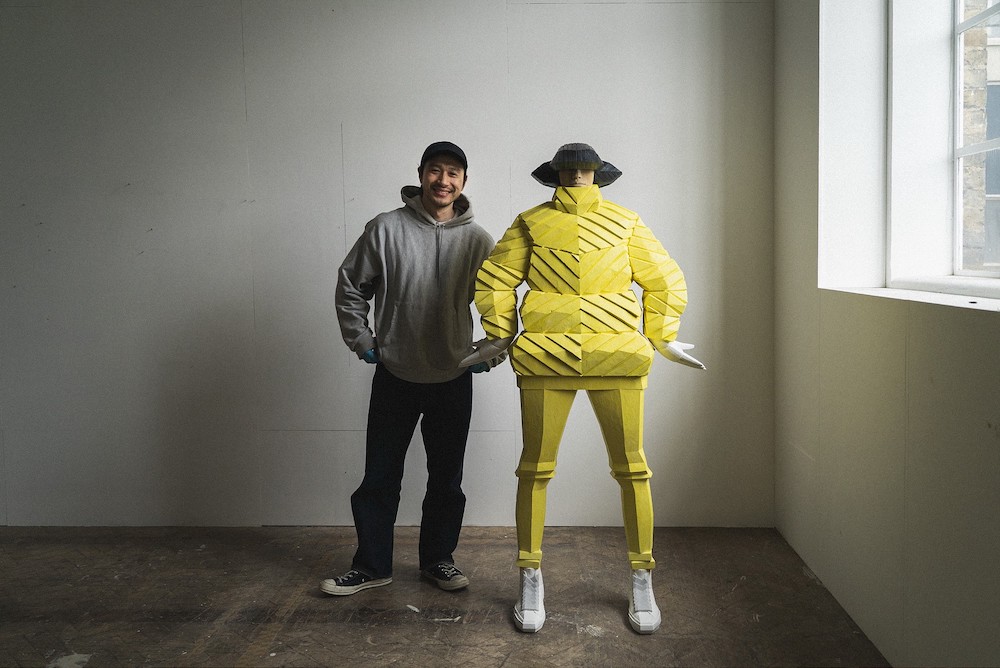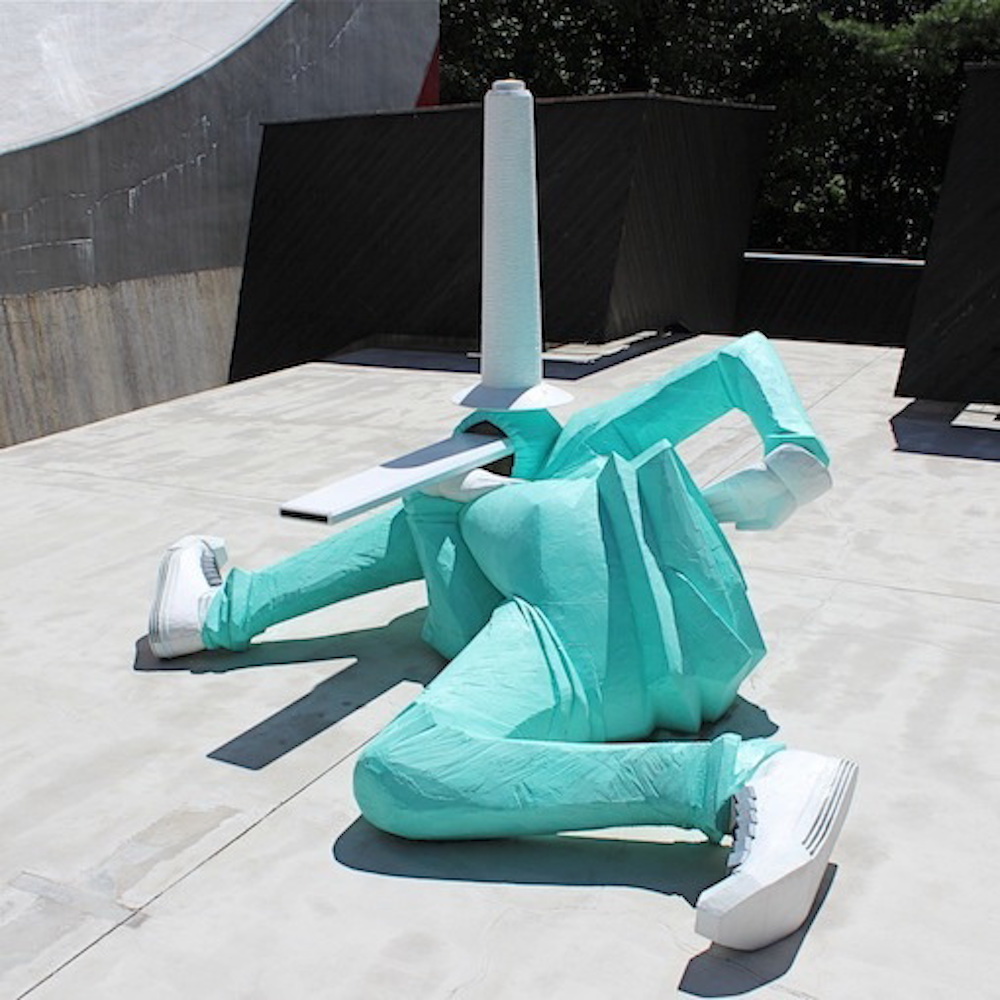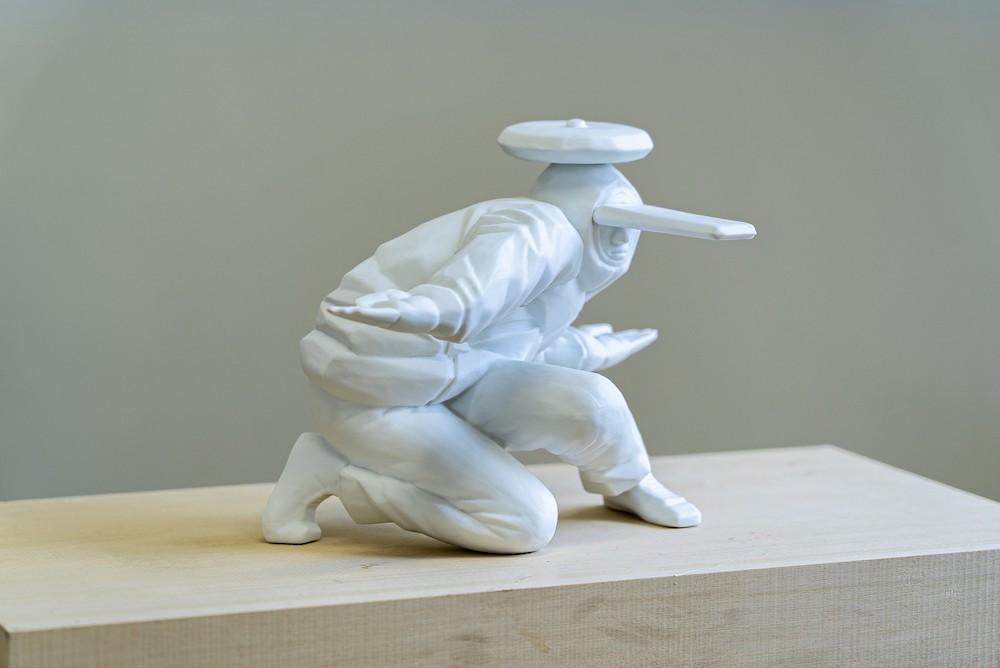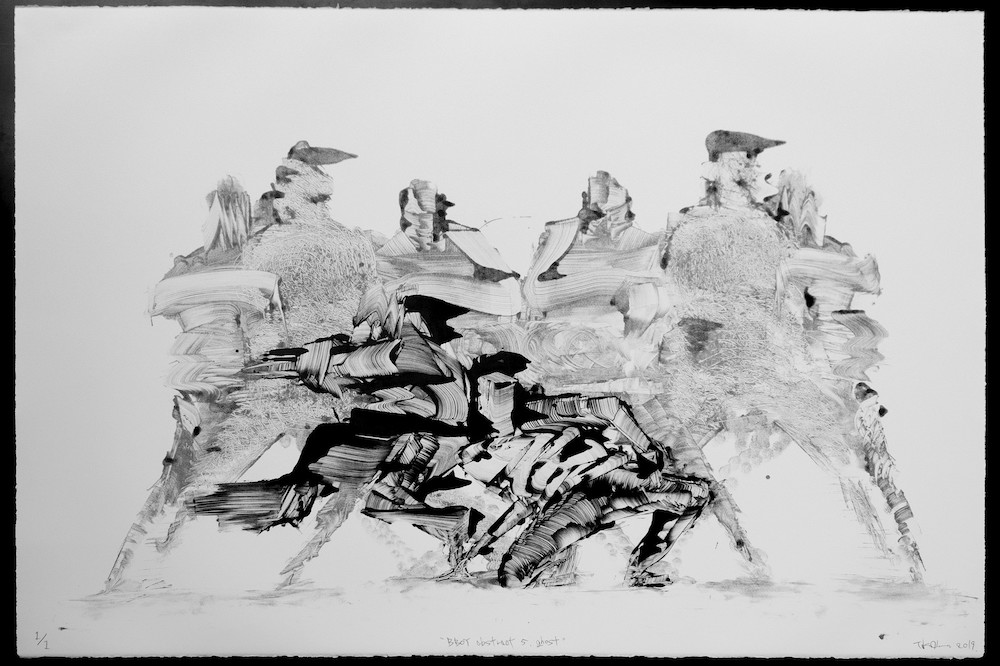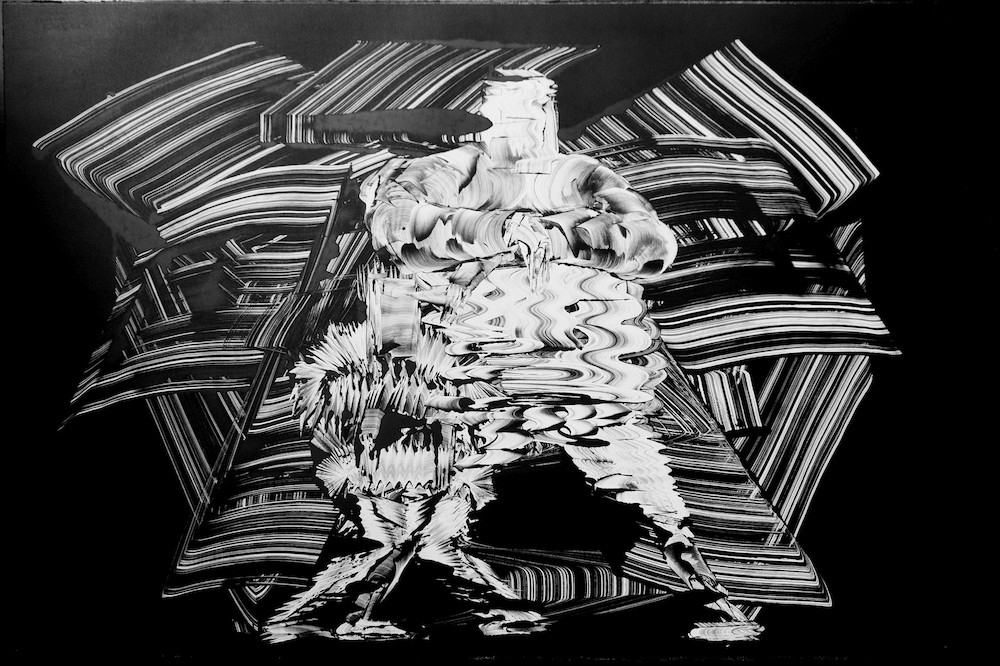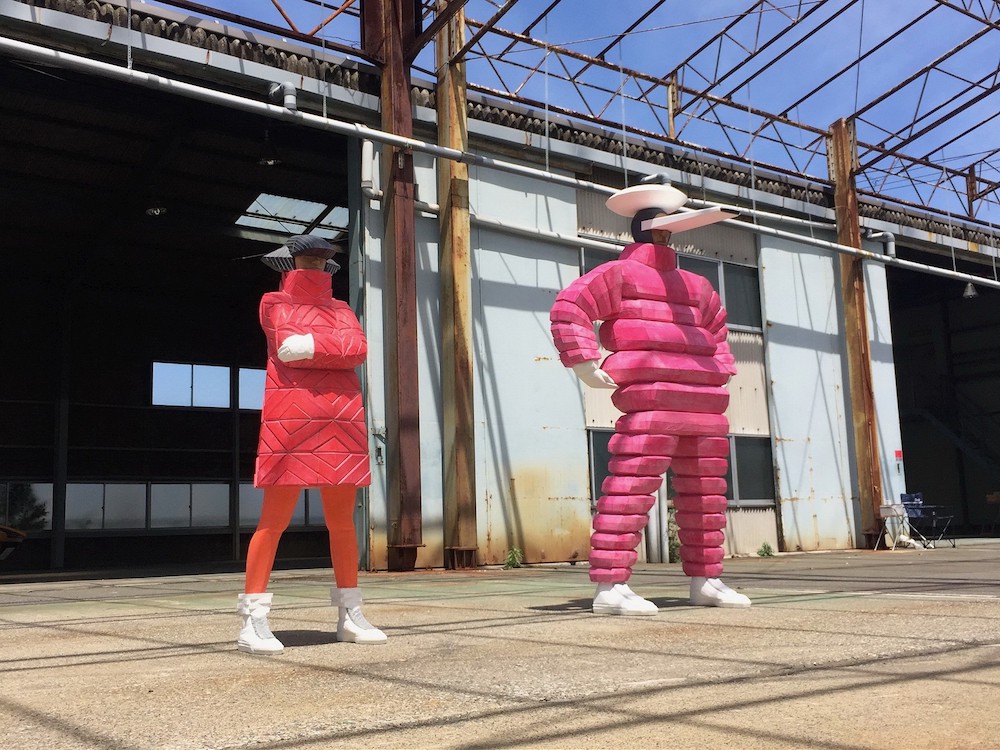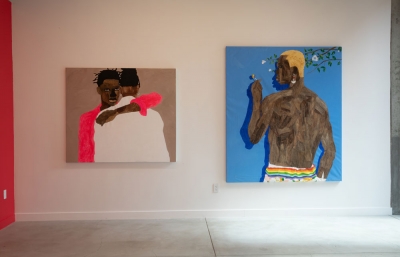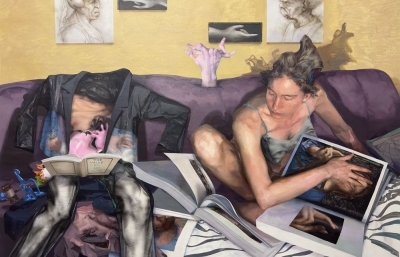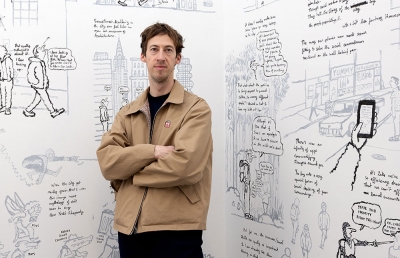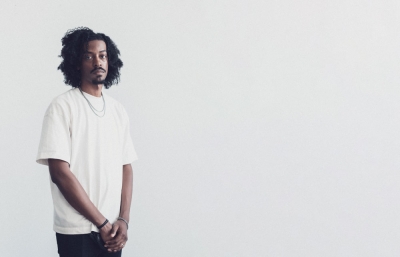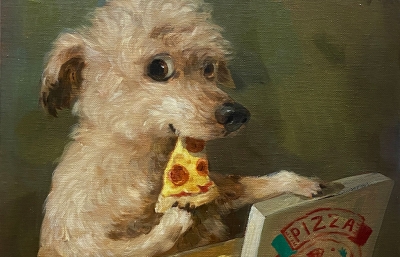We continue to be obsessed with young Japanese artists who channel ancestral craft traditions to produce new work with a modern sensibility. And for some time now, Saitama-based B-boy and artist, Obata Taku has been on our radar. From electric drawings that capture the movement of breakdancing to big sculptures of highly stylized B-boys, we are fascinated by his exploration of the dynamics of human bodies in motion, cleverly defined by attitude and clothing. In using traditional wood carving techniques to produce such contemporary work, Obata embodies the brash blend of past and future that often characterizes Japanese art.
Earlier this year Obata Taku took part in an Artist’s Residency at City & Guilds of London Art School, which culminated with a series of events at Japan House London. The presentations, drawing demonstrations and reveal of the new life-size sculpture entirely produced during that time took place during the Covid darkness of early March, so, eager to share his story with you, we reached out to Obata for a conversation about his practice, his newest work and his experiences in the British capital.
Sasha Bogojev: Tell us about your introduction to B-boy culture and participation in this global movement.
Taku Obata: Well, when I was in my second year of high school, my brother started breakdancing and that's when I started. As for the sculptures, my early B-boy sculpture was bought by Doze Green, who I respect so much, and then I did a solo exhibition at Jonathan Levine Gallery in New York in 2014.
Is the Japanese B-boy scene different from the scenes of other countries?
I was only in the Japanese B-boy scene, so I don't know much about other B-boy scenes. I went abroad when I started making sculptures, but was only dancing in Japan.
Were you making art before and when did you start making sculptures?
I was just a B-boy. I wanted to translate the B-boy into a new media, so I made a movie with clay animation in 1999. Then I came up with the idea of making a B-boy with sculpture so I started making them, but i still make videos
Were you focused on creating B-boy-related artwork from the start?
Yes, since I was 19 years old, I’ve studied sculpture and drawing, but all of my works were B-boy motifs.
When was your breakthrough moment in terms of sculpture?
I started sculpture 19 years ago when I was 20. For three years, I was a ronin, which is how we refer to undergraduates, and then I got into the sculpture department at the Tokyo University of the Arts. Japanese art schools cannot be entered without skills. I refined my drawing and statue skills for 3 years so I could make my B-boy works.
How long did you work on the piece that is now on view in London, and is there anything special about it compared to your other pieces?
When I make work in Japan, I basically carve sculptures from a single wooden block, and for the first rough carving, I also use chainsaws and power tools. But this time in London, I could not find a single tree mass.
So, how did you source the wood, what’s the story behind the the finished piece?
I had to buy 21 pieces of lumber, saw all of it, cut it, and carve it. And I couldn't use chainsaws and power tools because it was produced in an art school studio. So I made all the steps manually by myself. It took two months just to start the search for trees and to cut the wood. It took about 4 months from when I started carving. So, it was quite special. It proved that I can make this work out of just 21 pieces of timber with my own hands. It was a very long process.
Can you describe how your characters look, and why they have such distinctive headgear, eyewear, and outfit?
Old school B-boys fashion is the main motif. KANGOL hats, hunting, down jackets, jerseys, windbreakers, etc, are all deformed and made my own original. Both space and shapes. B-girl has deformed hair and no headgear.
I love how your work has a geometric, robotic feel, although it’s made from organic material, which I’m sure is intentional. What made you want to work with wood instead of other materials?
I thought nobody was making a B-boy with wood carving, and I thought it was simply beautiful, and also because carving is the opposite of modeling. Before I entered Tokyo University of the Arts, I studied sculpture by modeling, so I had the skills to make anything in modeling. However, it was very difficult to make things by carving when I entered University and started wood carving training. But I thought that if I mastered that, I would be able to make things between modeling and carving. If I could do that, I figured it would be the strongest.
How difficult was it to learn all the traditional carving methods?
Actually, I learned only the basics of how to make and sharpen wood carving tools. After that, I do my own carving with my own style.
Your process does feel very authentic and traditional. What attracts you to that method?
I think it is the best way to make a wood carving. There is still no better tool beyond traditional Japanese tools. Of course, I maintain the tools and am still mastering my technique.
What other projects do you have planned in the upcoming months?
I am planning to have a drawing-based solo exhibition in Japan in June and July respectively. I plan to have a big solo exhibition in the United States in about two years, and I am also making a drawing book.

